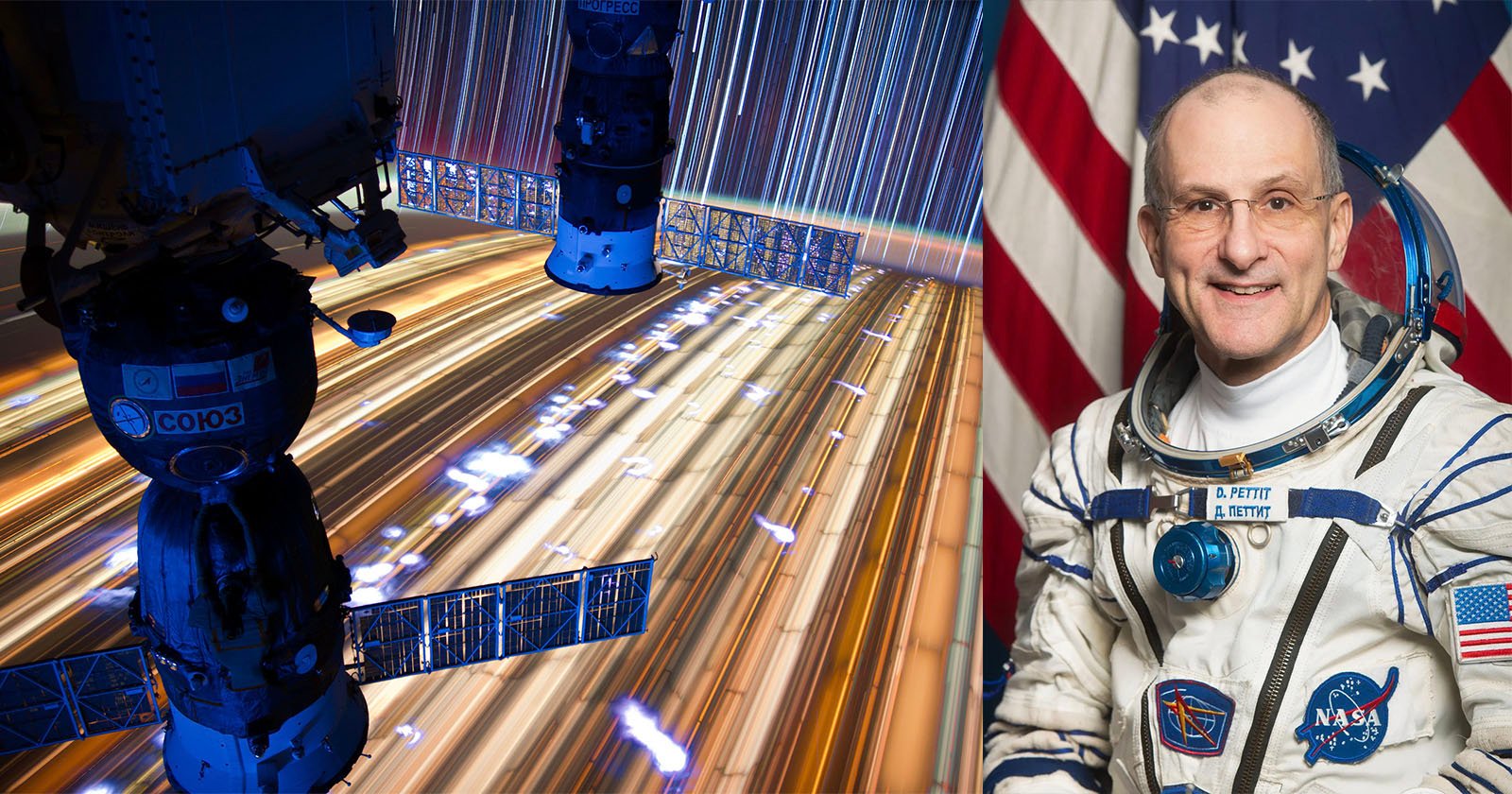
Don Pettit (right) and one of his incredible space photos (left). Not only will Don Pettit become the second-oldest NASA astronaut ever to visit space when he returns for his fourth mission in September, but arguably the best photographer to ever blast off into orbit will return to the International Space Station (ISS). Pettit, 69, has become well-known for the spectacular photos he took onboard the ISS, such as Lightning Bugs taken in 2012 which shows star trails, thunderstorms above Earth, and a green atmosphere known as airglow. Lightning Bugs by Donald Pettit And, of course, who can forget the self-portrait of Pettit taken in 2011 surrounded by Nikon D3s while floating in microgravity? A famous photo of Don Pettit on Expedition 30/31 in 2011 surrounded by Nikon D3s in microgravity. Per NASA, Pettit will launch on the Roscosmos Soyuz MS-26 spacecraft in September accompanied by Roscosmos cosmonauts Alexey Ovchinin and Ivan Vagner. The trio will spend approximately six months conducting science experiments onboard the ISS.
Pettit is currently undergoing training for ISS Expedition 72 in Star City, Moscow in a rare show of cooperation between the U.S. and Russia. It will be almost 30 years since Pettit’s first spaceflight. He has logged 370 days in space and has been on two spacewalks that lasted a total of 13 hours and 17 minutes. Star trails with the ISS visible. Don Pettit’s Barn Door Tracker Not only has Pettit taken spectacular images but he has also helped his fellow astronauts capture better photos by inventing a barn door tracker from “stuff lying around” the ISS. It is a device that counteracts orbital motion in space allowing photographers to capture sharp images of cities at night. “Before I made this barn door tracker on the station you would do a handheld picture of cities at night with maybe a one-second exposure and they’d always be blurry particularly if they were done with a telephoto lens,” he told PetaPixel in November last year. “This was the first time it allowed anybody to get sharp images of cities at night.” But in an exciting development, Pettit is bringing an improved version of the barn door tracker that is a wind-up device based on a kitchen timer. “It will reduce the motion so that the shaft turns one revolution every 90 minutes—that’s the station’s orbital period,” he tells Scientific American.
“And the station will pitch down at a rate that makes one revolution about its center of gravity. That way, the same side of the station points towards Earth as it goes around. This pitch rate is about four degrees a minute. “I made a little wind-up timer that will move a camera mount at the pitch rate, so that way I can do time exposures primarily intended for pictures of the stars.” Pettit’s invention will mean that photographers onboard the ISS will be able to make exposures of the stars longer than three seconds which he says should bring out the array of colors that can be seen across the Universe when looking with the naked eye. “There are colors of stars that you just can’t discern from Earth,” he adds. The astrophotography aid is not the only device Pettit has invented in space, he devised an open cup that allows astronauts to sip coffee in microgravity. Until then, all liquid was consumed out of a plastic bag using a straw. It became the first patented invention made in space. Pettit has been shooting photos since he was a boy, starting with a Kodak Brownie camera when he shot and developed black-and-white film himself.
“I was already an expert in photography when I got selected as an astronaut,” he said. “I just kept moving up and up and dumping as much money as I had into photographic equipment as probably all the people who follow PetaPixel do.” Image credits: Photographs by NASA/Don Pettit






